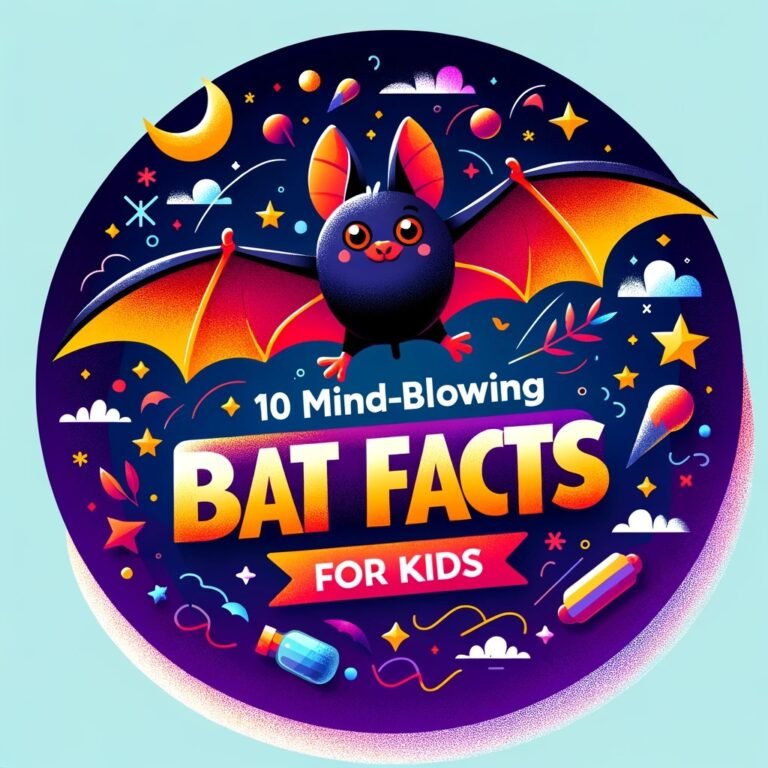Welcome to our blog post on “Bat Facts For Kids”! From flying through the night sky to munching on thousands of insects, bats are fascinating creatures with many unique traits. Whether you’re a younger kid learning about the bumblebee bat, the world’s smallest mammal, or an older kid discovering how vampire bats sustain their diet by drinking blood, there is so much to uncover about these winged mammals. Dive into the world of bats and explore how they help control insect populations, hibernate during winter, and use echolocation to navigate in the dark. Join us on this exciting journey to learn more about these incredible creatures and their important roles in the ecosystem. Get ready to be amazed by the wonders of bats in our fun and informative post!
Bat Facts For Kids
1. Bats Are the Only Mammals that Can Fly
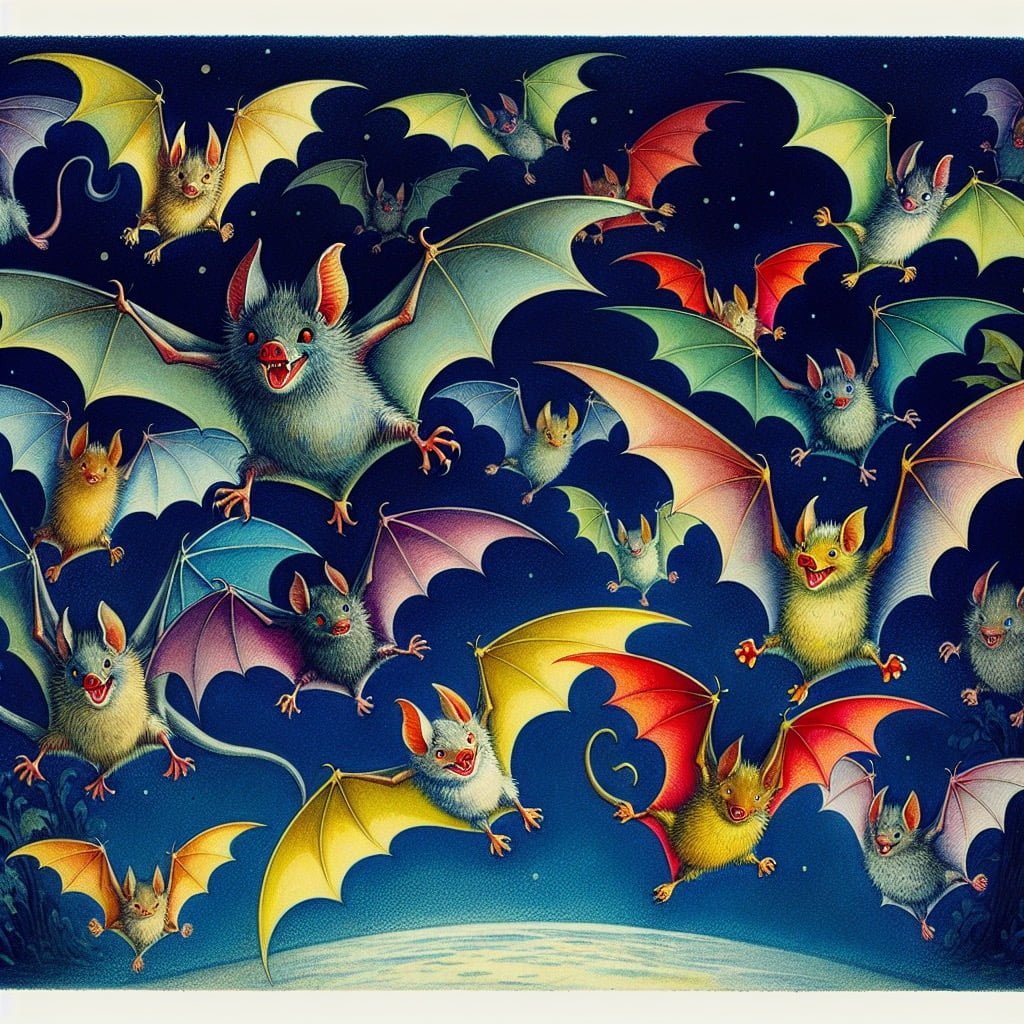
For younger kids: Bats can flap their wings and soar through the night sky.
For older kids: Bats belong to the only mammal group capable of sustained flight; their wing structure enables agile and dynamic aerial movements.
Detailed explanation:Bats are truly fascinating creatures that have captured the curiosity of both children and adults alike. One of the most intriguing and unique aspects of bats is that they are the only mammals that can fly. Unlike birds, bats do not have feathers or wings made of bone. Instead, their wings are made of a thin and flexible membrane of skin, muscle, and bones. This adaptation allows bats to be incredibly agile flyers, capable of performing complex maneuvers in the air.
The ability to fly gives bats a distinct advantage over other mammals. It allows them to access food sources that are not available to ground-dwelling animals. Bats are primarily nocturnal creatures, meaning they are most active at night. Their ability to fly in the dark gives them an edge when hunting for insects, which make up a large part of their diet. In fact, some species of bats can consume hundreds of insects in a single night.
In addition to their impressive flying skills, bats also play a crucial role in ecosystems around the world. As nocturnal predators, they help control insect populations, which can have a significant impact on agriculture and human health. Bats also pollinate flowers and disperse seeds, contributing to the health of plant species. Without bats, many ecosystems would suffer.
Overall, the fact that bats are the only mammals that can fly is just one of the many fascinating aspects of these creatures. By understanding and appreciating these unique animals, we can work towards conserving and protecting them for future generations to enjoy. So, next time you see a bat fluttering through the night sky, remember the incredible feat of nature that is bat flight.
Bat Facts For Kids
2. The Tiny Bumblebee Bat is the World’s Smallest Mammal
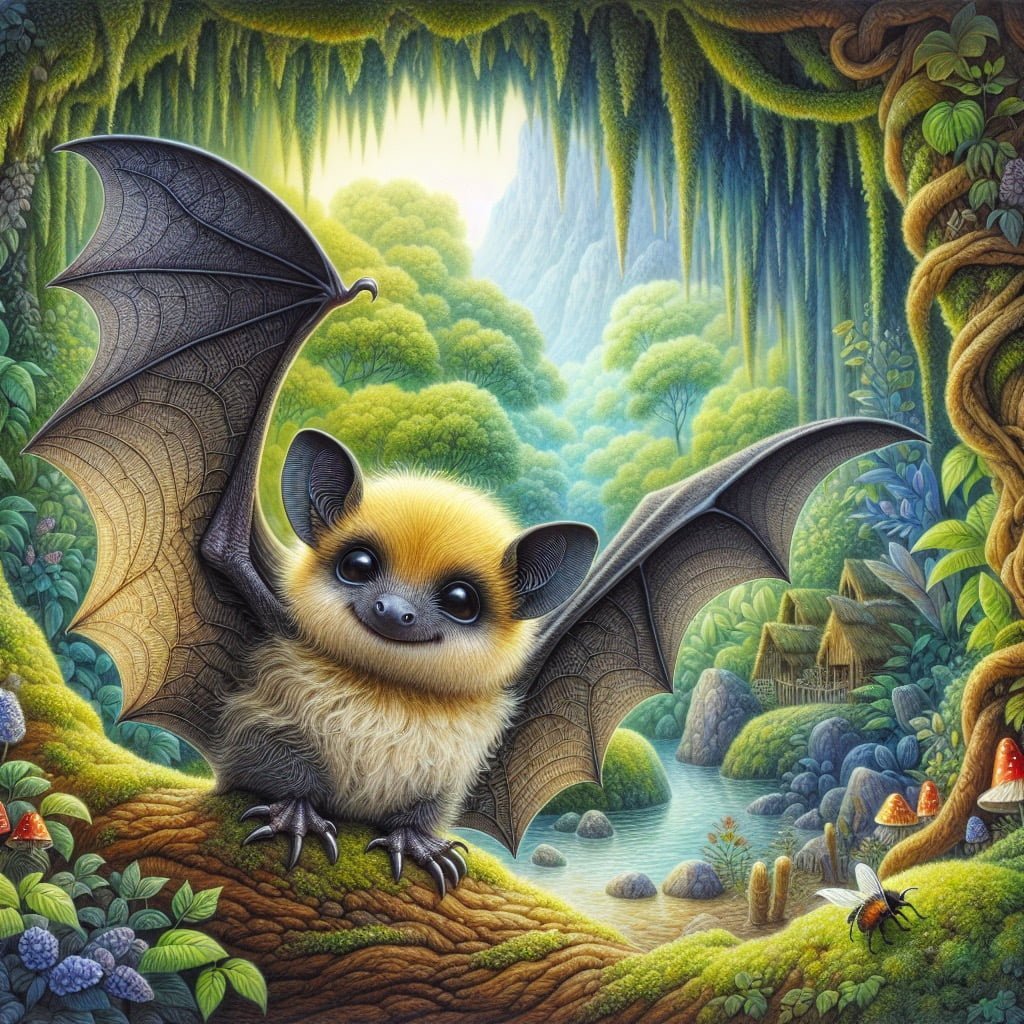
For younger kids: The bumblebee bat is as small as a little thumb!
For older kids: The bumblebee bat, weighing less than a penny, holds the title for the world’s smallest mammal, found in Thailand and Myanmar.
Detailed explanation:Did you know that the tiny bumblebee bat holds the title for being the world’s smallest mammal? These fascinating creatures, also known as Kitti’s hog-nosed bats, are found in the forests of Thailand and Myanmar. With a body length of only about 1.1 to 1.3 inches and weighing just 2 grams, they truly are miniature marvels of the animal kingdom.
One of the most interesting Bat Facts For Kids about bumblebee bats is their distinctive appearance. These tiny mammals have a pig-like snout, hence their other common name, hog-nosed bats. Their fur is a light grey or reddish-brown color, which helps them blend in with their surroundings. Despite their small size, bumblebee bats are skilled flyers and can dart through the air with incredible agility.
Another fascinating aspect of bumblebee bats is their feeding habits. These bats primarily feed on insects, such as flies and beetles, which they catch in flight using echolocation. Echolocation is a process where bats emit high-frequency sounds and listen for the echoes that bounce back off objects, allowing them to navigate and hunt in the dark.
Unfortunately, bumblebee bats are classified as vulnerable due to habitat loss and human disturbance. Conservation efforts are in place to help protect these unique creatures and ensure their survival in the wild. By raising awareness about the world’s smallest mammal, we can appreciate the importance of preserving their natural habitats for future generations to enjoy.
Bat Facts For Kids
3. Bats Help Control Insect Populations
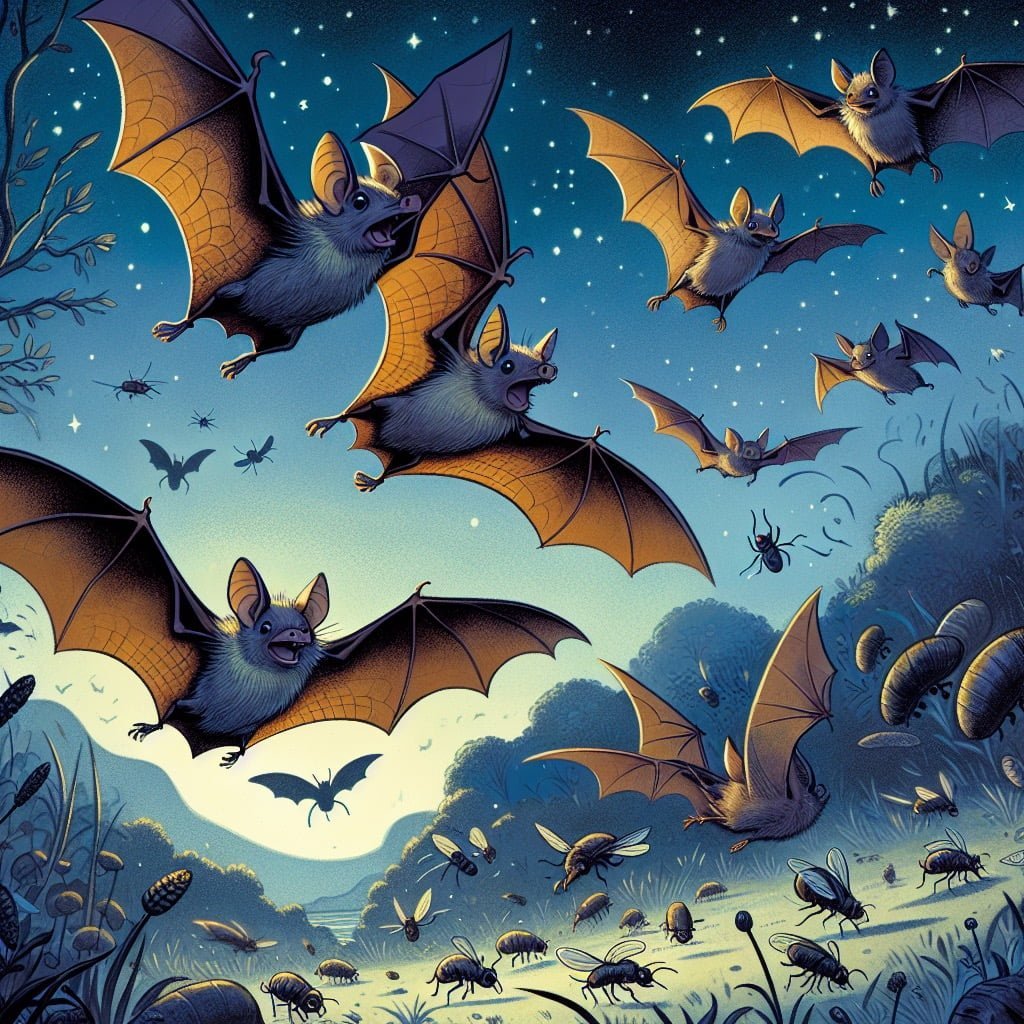
For younger kids: Bats love to eat insects like mosquitoes and flies.
For older kids: Bats play a crucial ecological role by preying on insects, consuming thousands each night and helping control pest populations naturally.
Detailed explanation:Bats play a crucial role in helping to control insect populations, making them valuable allies in maintaining ecological balance. As nocturnal creatures, bats are expert insect hunters, with some species consuming thousands of insects in a single night. This voracious appetite for insects helps to keep insect populations in check, preventing them from reaching levels that could be harmful to crops, forests, and even human health.
One of the reasons why bats are so effective at controlling insect populations is their unique echolocation ability. Using high-frequency sounds, bats can navigate in darkness and pinpoint the location of their insect prey with remarkable accuracy. This allows them to efficiently hunt and consume large numbers of insects, helping to reduce pest damage and decrease the need for chemical pesticides.
In addition to directly consuming insects, bats also play a role in maintaining healthy ecosystems by dispersing seeds and pollinating plants. By feeding on fruit and nectar, bats help to spread seeds and promote the growth of plant species. This not only contributes to biodiversity but also supports other wildlife that depend on these plants for food and shelter.
Overall, the important role that bats play in controlling insect populations highlights the interconnectedness of species within an ecosystem. By understanding and appreciating the valuable services that bats provide, we can work towards conserving and protecting these fascinating creatures for future generations to enjoy. So, these are some fascinating Bat Facts For Kids.
Bat Facts For Kids
4. Vampire Bats Drink Blood for Food
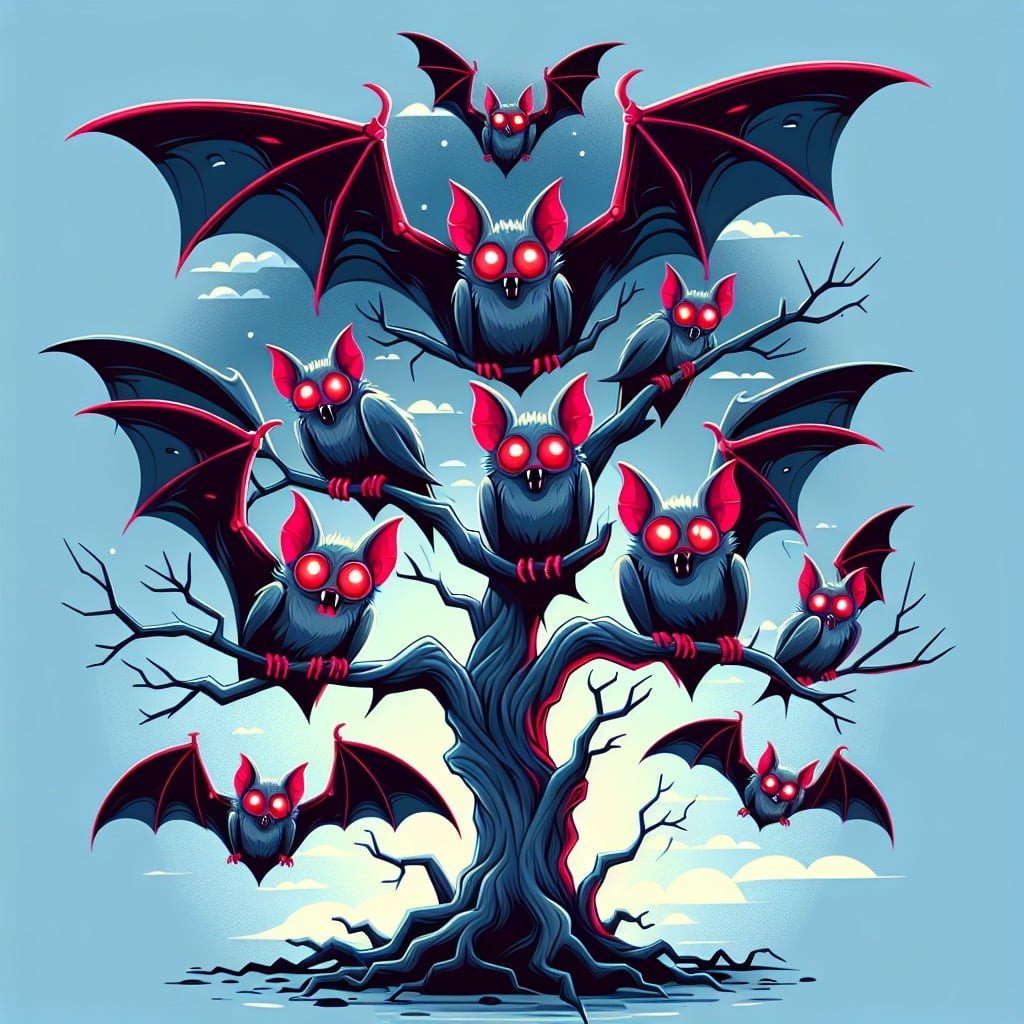
For younger kids: Vampire bats actually drink blood from animals!
For older kids: Vampire bats sustain their diet by feeding on blood, but they usually target livestock or birds and make a tiny incision to lap up blood without causing harm.
Detailed explanation:One fascinating aspect of bat behavior is the fact that vampire bats feed on blood for their sustenance. This interesting behavior is not a common trait among all bat species, as the majority of bats feed on insects, fruit, nectar, or small animals. Vampire bats, however, have adapted to a diet of blood, which sets them apart from their fellow bat species.
Vampire bats possess specialized adaptations that allow them to feed on blood effectively. They have sharp, razor-like teeth that are ideal for making small, precise incisions in their prey’s skin. Once they have made a cut, they use their elongated tongues to lap up the blood, which is processed quickly due to special enzymes in their saliva that prevent blood from coagulating.
The ability of vampire bats to survive on a diet of blood has made them intriguing subjects for scientific study. Researchers have found that these bats have evolved unique social behaviors to ensure their survival. Vampire bats will often regurgitate blood to share with other members of their roost who have been unsuccessful in finding a meal, showcasing their cooperative and altruistic tendencies.
Learning about vampire bats and their feeding habits can help children develop an appreciation for the diversity of the animal kingdom. By understanding how these creatures have adapted to their unique diets, kids can gain a deeper understanding of the natural world and the incredible ways in which animals have evolved to survive in their environments. By exploring bat facts for kids, children can discover the fascinating world of bats and the many interesting behaviors they exhibit.
Bat Facts For Kids
5. Some Bats Hibernate During Winter

For younger kids: During the cold months, some bats snuggle up and take long naps.
For older kids: Some bat species undergo hibernation in winter, slowing down their metabolism to conserve energy and survive the chilly season.
Detailed explanation:One fascinating fact about bats is that some species hibernate during the winter months. This behavior is essential for their survival, as food becomes scarce and the cold weather makes it difficult for them to find insects to eat. By entering a state of hibernation, bats can conserve energy and wait out the harsh winter conditions until food sources become more abundant again in the spring.
During hibernation, bats lower their body temperature and metabolism in order to reduce energy expenditure. They find shelter in caves, trees, or other protected areas where they can remain undisturbed. This period of dormancy allows bats to survive for extended periods without food, sometimes for several months at a time.
It is important for kids to learn about this behavior of bats as it highlights the incredible adaptations that these creatures have evolved in order to thrive in diverse environments. By understanding how bats hibernate, children can develop a greater appreciation for the natural world and the unique ways in which different species have adapted to survive in their habitats.
In addition to hibernation, bats have many other interesting characteristics that make them a fascinating topic of study for kids. They are the only mammals capable of sustained flight, using their wings to navigate through the air in search of food. Bats also play a crucial role in ecosystems by controlling insect populations, pollinating plants, and dispersing seeds. Overall, bats are truly remarkable animals that deserve to be celebrated for their unique abilities and importance in the natural world.
In conclusion, learning about bat facts for kids, such as their hibernation behavior, can help children develop a deeper understanding and respect for these amazing creatures. By exploring the world of bats, kids can gain valuable insights into the complex and interconnected web of life that exists in our natural environment.
Bat Facts For Kids
6. Bats Use Echolocation to Navigate in the Dark

For younger kids: Bats send out sounds that bounce back to help them see in the dark.
For older kids: Bats emit high-frequency sounds and listen to echoes to navigate spaces, hunt prey, and avoid obstacles, a process known as echolocation.
Detailed explanation:Bat Facts For Kids are always fascinating to learn about. One interesting fact about bats is that they use echolocation to navigate in the dark. Echolocation is a technique that bats use to locate objects in their environment by emitting high-frequency sound waves and listening for the echoes that bounce back to them. This allows bats to “see” in the dark, even when it’s pitch black outside.
When a bat sends out a sound wave, it travels until it hits an object. The sound wave then bounces back to the bat, who can interpret the information in the returning echo to determine the distance, size, shape, and texture of the object. This process all happens very quickly, allowing bats to navigate through the darkness with incredible precision.
In addition to helping bats avoid obstacles and find prey in the dark, echolocation also plays a crucial role in their social interactions and mating behaviors. Different species of bats have evolved unique echolocation calls suited to their specific environments and hunting strategies, making it a versatile and effective tool for survival.
Overall, echolocation is a remarkable adaptation that allows bats to thrive in their nocturnal habitats. By understanding how bats use echolocation to navigate in the dark, we can appreciate the incredible abilities of these fascinating creatures even more. So next time you see a bat flying overhead in the night, remember the amazing world of echolocation that they rely on for their survival.
Bat Facts For Kids
7. Flying Foxes Have a Wingspan of Up to 6 Feet
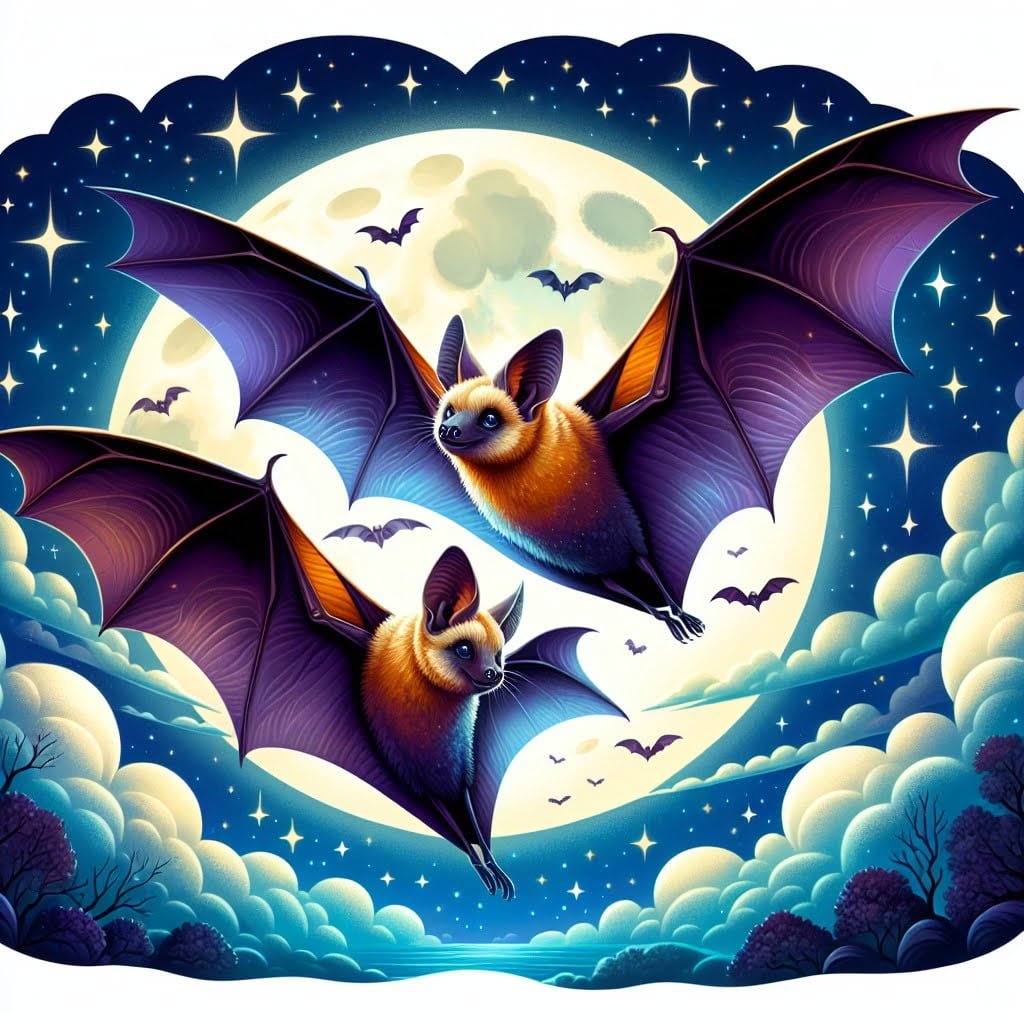
For younger kids: Flying foxes have wings as long as some tall grown-ups are tall!
For older kids: The giant flying fox bat species boast wingspans that reach up to 6 feet, making them one of the largest bat species globally.
Detailed explanation:Flying foxes, also known as fruit bats, are a fascinating species of bat that belong to the Pteropus genus. One of the most impressive characteristics of these creatures is their enormous wingspan, which can reach up to 6 feet in length. This makes them one of the largest species of bat in the world.
Flying foxes are found in various regions across the globe, including Australia, Africa, Asia, and some Pacific islands. They are known for their unique feeding habits, as they primarily consume fruits, nectar, and pollen. Their long, slender wings are perfectly adapted for navigating through dense forests in search of food.
In addition to their impressive wingspan, flying foxes are also known for their distinctive facial features, which include large eyes and dog-like snouts. These adaptations help them locate food and navigate their surroundings efficiently, especially during nighttime when they are most active.
Despite their large size, flying foxes are gentle creatures that play a crucial role in pollination and seed dispersal. They are essential for maintaining the health of many ecosystems and are considered keystone species in their habitats.
Overall, flying foxes are truly remarkable creatures that capture the imagination of both kids and adults alike. Their impressive wingspan of up to 6 feet is just one of many fascinating facts about these incredible animals that make them an important subject of study and admiration in the world of bat facts for kids.
Bat Facts For Kids
8. Bats Are Not Blind, They Can See Fine
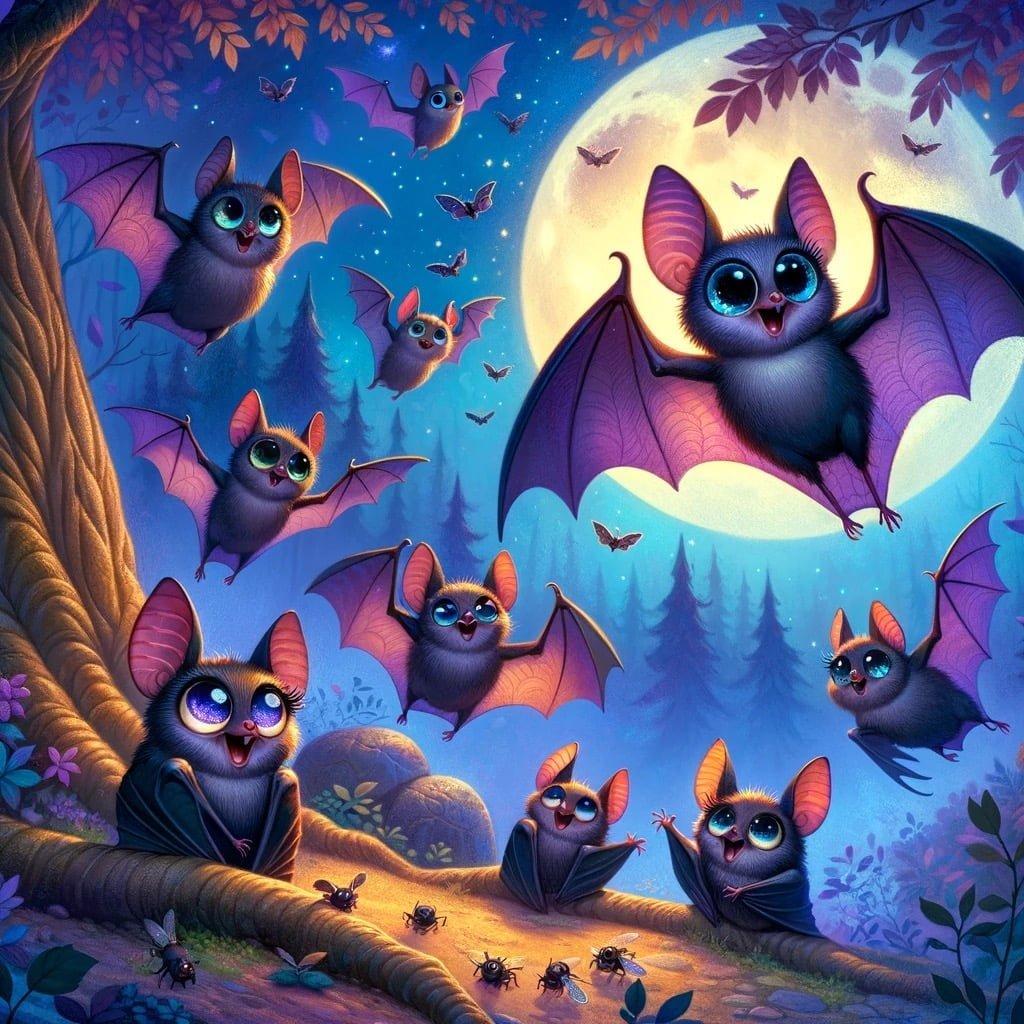
For younger kids: Bats have sharp eyesight, and they can see in the dark too!
For older kids: Bats possess good vision despite common misconceptions, with some species seeing in color and adapting to low-light environments while using echolocation as their primary sense.
Detailed explanation:Contrary to popular belief, bats are not blind. In fact, they have fairly good eyesight and are able to see just as well as many other nocturnal animals. While it is true that some species of bats rely more heavily on echolocation to navigate and find prey, their vision is still an important sense for them.
Bats have adapted to be able to see in low light conditions, which is why they are most active at dawn and dusk when there is less natural light available. Their eyes are equipped with a high number of rods, which are specialized photoreceptor cells that are sensitive to low levels of light. This allows bats to see in dim light and navigate through their surroundings with relative ease.
In addition to their sharp night vision, bats also have a keen sense of smell and hearing, which further aid them in locating food and avoiding predators. This combination of sensory abilities makes bats highly skilled hunters and efficient flyers.
Overall, it is important to dispel the myth that bats are blind, as this misconception can lead to misunderstandings and fear of these fascinating creatures. By understanding and appreciating the true abilities of bats, we can gain a greater respect for the important role they play in our ecosystem. So, remember, next time you encounter a bat, know that they can see just fine!
Bat Facts For Kids
9. Egyptian Fruit Bats Help Pollinate Plants
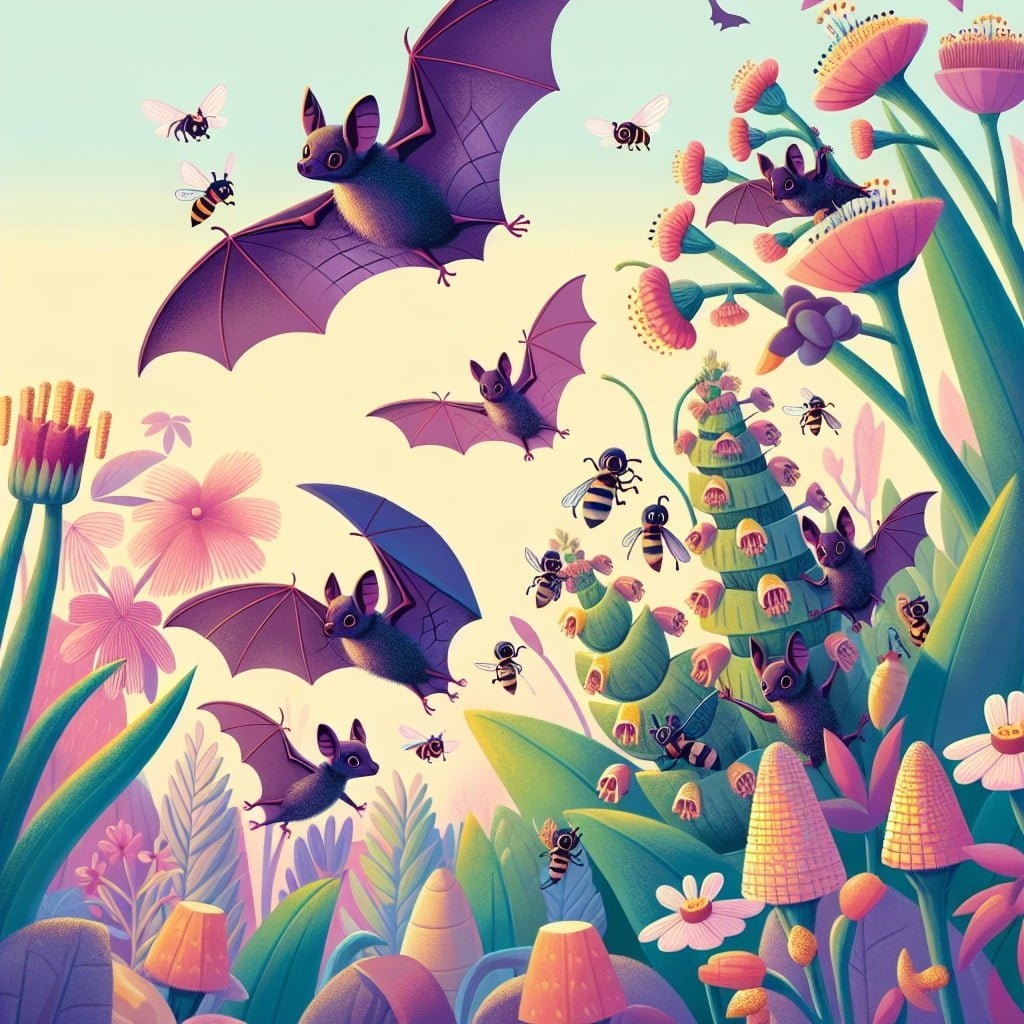
For younger kids: Egyptian fruit bats love to drink nectar and help flowers grow!
For older kids: Egyptian fruit bats serve as essential pollinators, feeding on nectar and inadvertently transferring pollen while foraging, contributing to plant reproduction.
Detailed explanation:One intriguing fact about Egyptian fruit bats is that they play a crucial role in the pollination of plants. These bats are important pollinators for a variety of plant species, especially those in tropical regions where they are native. As these bats feed on fruits like figs, dates, and mangoes, they inadvertently transfer pollen from one flower to another, aiding in the plant’s reproduction process.
The relationship between Egyptian fruit bats and plants is a classic example of mutualism, where both parties benefit from the interaction. While the bats get a nutritious meal from the fruits they consume, the plants benefit from the bats’ pollination activities, leading to increased genetic diversity and healthier plant populations.
The unique feeding habits of Egyptian fruit bats make them highly effective pollinators. As they fly from tree to tree in search of ripe fruits, they inadvertently brush against the flowers, transferring pollen from male to female reproductive organs. This process is essential for the plants to produce seeds and fruits, ensuring their continued existence and diversity.
Furthermore, the role of Egyptian fruit bats in pollination highlights the interconnectedness of species in an ecosystem. Without these bats, many plant species would struggle to reproduce and maintain their populations, leading to potential cascading effects on other organisms that depend on these plants for food and shelter.
In conclusion, Egyptian fruit bats are not only fascinating creatures but also essential pollinators for many plant species. By understanding and appreciating the important role these bats play in ecosystems, we can work towards conserving their populations and ensuring the health and diversity of plant life for future generations. Remember, Bat Facts For Kids are not only fun to learn about but also showcase the intricate relationships that exist in the natural world.
Bat Facts For Kids
10. A Single Brown Bat Can Devour Thousands of Insects Each Night
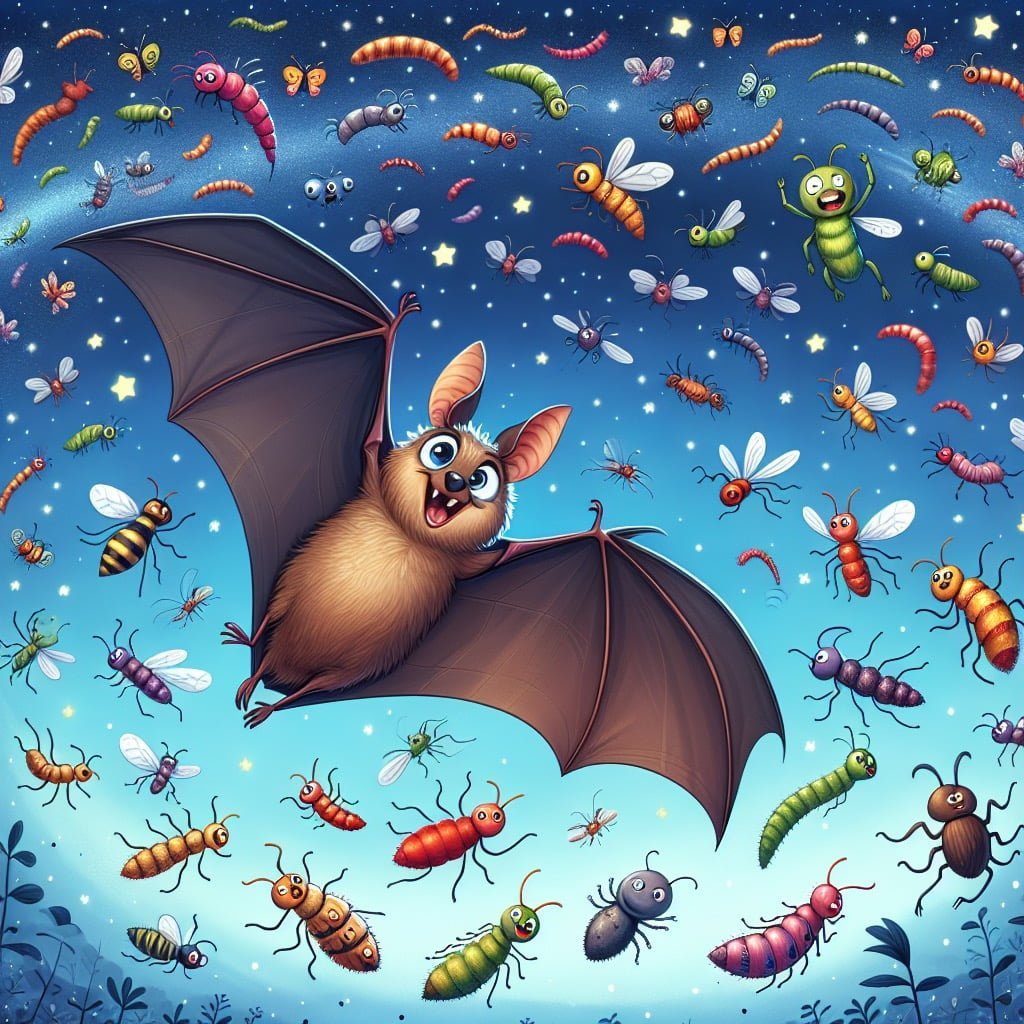
For younger kids: Brown bats eat so many bugs that they can help keep gardens bug-free!
For older kids: A single brown bat can consume thousands of insects nightly, showcasing their significant impact in reducing insect pests and aiding agricultural pest management.
Detailed explanation:Bats are fascinating creatures with unique abilities that make them invaluable to the environment. One impressive fact about bats is that a single brown bat has the amazing capability to devour thousands of insects each night. This ability makes bats essential in controlling insect populations, which helps maintain ecological balance.
Bats are nocturnal creatures, meaning they are active at night. They have developed specialized echolocation capabilities that allow them to navigate and hunt in the dark. By emitting high-frequency sound waves and listening to the echoes that bounce back, bats can locate prey with remarkable precision. In the case of brown bats, their diet primarily consists of insects such as moths, beetles, and mosquitoes.
The sheer number of insects that a single brown bat can consume in one night is truly astounding. This not only benefits the bats themselves by providing them with a reliable food source, but it also benefits humans and the environment. With the decline of natural predators and the rise of insect-borne diseases, the role of bats in controlling insect populations is more important than ever.
For kids interested in learning more about bats, understanding this fact can be both educational and exciting. It showcases the unique abilities of these flying mammals and highlights their importance in the ecosystem. By spreading awareness about bat facts for kids, we can help foster a greater appreciation for these remarkable animals and the valuable role they play in our world.
Did you know?
Did you know that bats can live for over 30 years in the wild?
Summary of Bat Facts For Kids
Discover the fascinating world of bats with these fun and educational facts perfect for kids of all ages! From the incredible ability to fly to their role in controlling insect populations, bats are truly unique mammals. Learn about the tiny bumblebee bat, the world’s smallest mammal, and how vampire bats drink blood for food. Explore how some bats hibernate during winter and how they use echolocation to navigate in the dark. Find out about the impressive wingspan of flying foxes and how Egyptian fruit bats help pollinate plants. With each fact, you’ll be amazed by the important ecological roles that bats play in our world. So, if you want to spark your curiosity and learn more about these fascinating creatures, dive into our bat facts for kids blog post!
Sources and additional information for Bat Facts For Kids
WikipediaBritannicaSan Diego Zoo KidsThe Smithsonian InstitutionDK Find Out!Australian MuseumWorld Wildlife FundThe Nature ConservancyAnimal PlanetMonterey Bay AquariumPBS NatureSmithsonian’s National Zoo & Conservation Biology InstituteWorld Wildlife FundAnimal Diversity Web (University of Michigan)IUCN Red List of Threatened SpeciesThe Cornell Lab of Ornithology – All About BirdsNational Audubon SocietyEncyclopedia of LifeSeaWorld Parks & EntertainmentAustralian Museum – AnimalsEncyclopedia of Life
